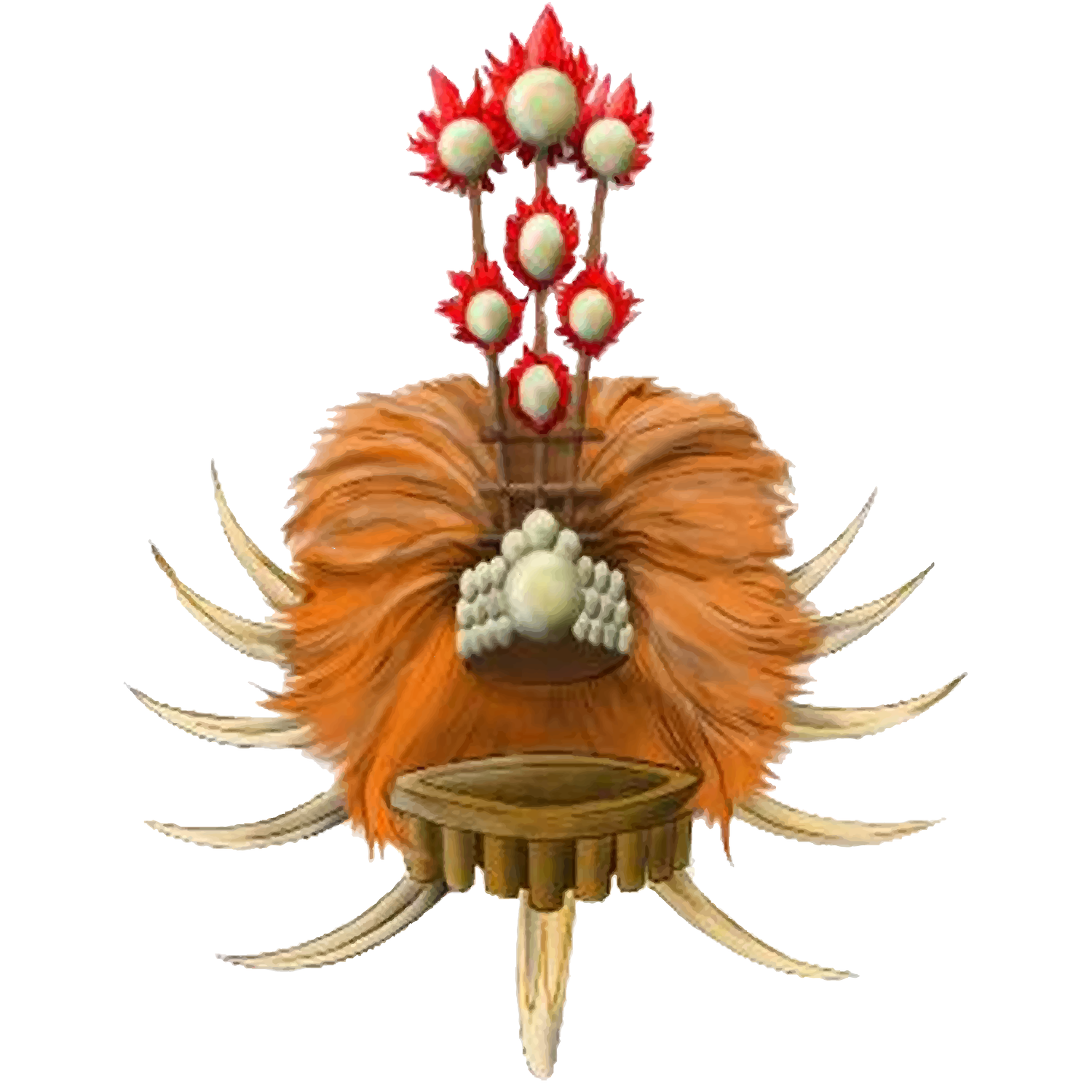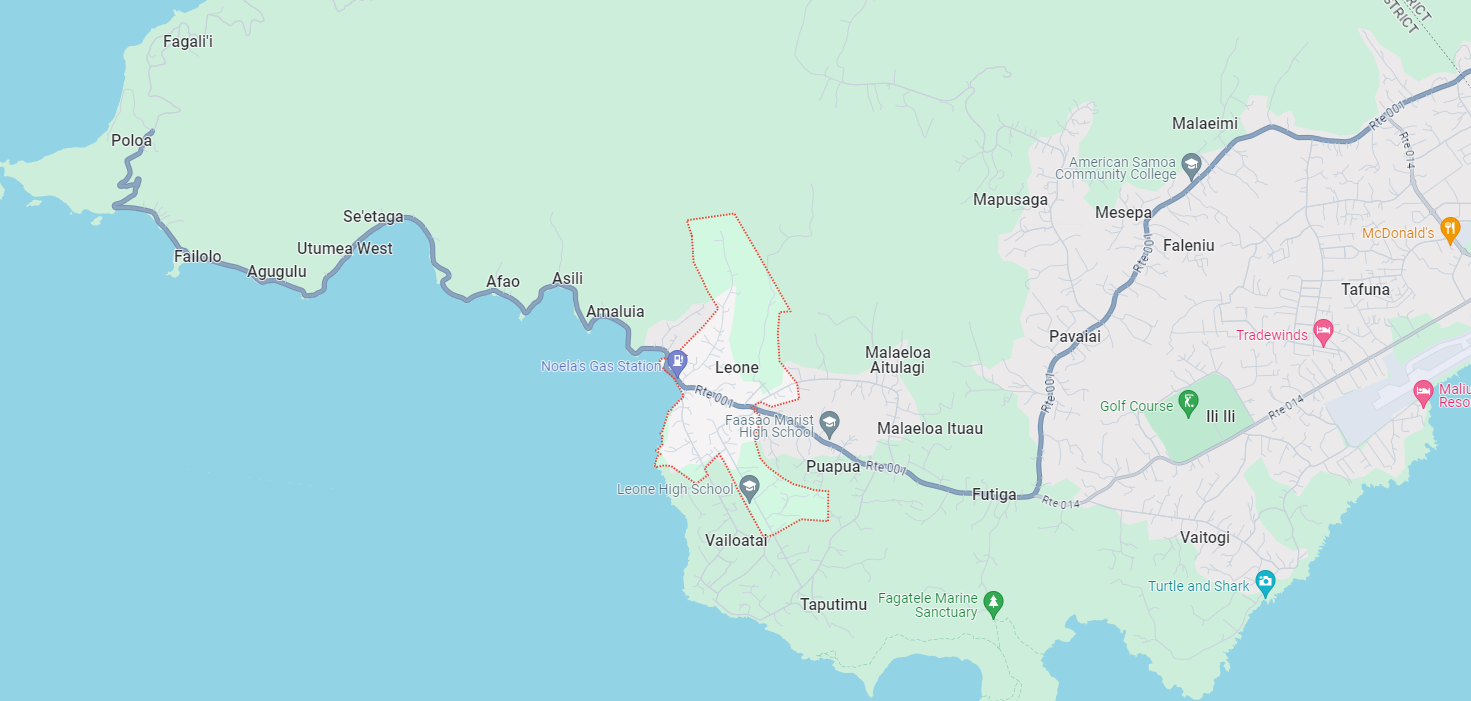about leone
Leone is the second-largest city on Tutuila Island's west coast. The village is on the south-west coast of Tutuila Island, American Samoa. Leone was the ancient capital of Tutuila Island. Leone was also where the Samoan Islands’ first missionary, John Williams, visited on October 18, 1832. A monument in honor of Williams has been erected in front of Zion Church. Its large church was the first to be built in American Samoa. It has three towers, a carved ceiling and stained glass. Until steamships were invented, Leone was the preferred anchorage of sailing ships which did not risk entering Pago Pago Harbor. Much early contact between Samoans and Europeans took place in Leone.
The village is home to some of the oldest buildings on Tutuila Island. Besides the oldest church in American Samoa, Leone is home to a post office, high school, Pritchard's Bakery, and Kruse Supermarket. Buses from Fagatogo to Leone leave every few minutes throughout the year. An airstrip was built at Leone during World War II. The village is home to two historical sites listed on the U.S. National Register of Historic Places: Fagalele Boys School, which may be the oldest building on Tutuila Island, and Tataga-Matau Fortified Quarry Complex.
Until the invention of the motorboat, Pago Pago Harbor was of little value as the ships were unable to turn around in such a confined area. The most common anchorage was therefore in Leone, where the first missionaries also arrived. Its strategic location, directly over the southern horizon from Upolu Island, and the district Atua, has made Leone a major resting port for those traveling between Upolu, Tutuila, and the Manu'a Islands. Leone is now a lively municipal center. The origin of several of Leone's chiefly titles can be traced to Western Samoa.
FUN FACT
The Villages name originated from a famine that devastated Tutuila Island before modern history. Oral history shared through generations of ancestry recorded that Leone did not experience starvation nor the lack of food during this famine. Instead, the village had an abundance of food and other necessities, hence the name “Leone” which derives from “Le” (No) and “One” (Famine). During this famine, the villagers in Leone provided food and commodities for nearby villages and for families from a farther distance. This has earned the village the prestigious title “Leone o le Tinā o le Alofa”, which means “Leone is the Mother of Love.” The village's musical emblem is a living recording of this historical representation.
HISTORY
19th Century
When missionary John Williams returned to the Samoan Islands in 1832, he dropped anchor in Leone Bay, but did not want to go directly ashore as he feared it was A'asu, site of the massacre of French sailors. Williams was surprised when a village chief paddled out to his ship to assure him that it would be safe to come ashore.
On October 11, 1839, Commodore Charles Wilkes of the United States Exploring Expedition visited Leone. Midshipman William Reynolds was assigned surveying duty under Lieutenant Joseph Underwood. In the village, they were introduced to Chief Tuitele, who was happy to welcome them as guests for the night. In his diary, Reynolds described the gentleness and civility of the villagers. He wrote: “I noticed in the men, a fondness & care displayed towards their children,” and went on to write: “While on the beach many huge fellows had infants & babbling youngsters in their arms.” He later questioned whether “these people have more claim to be good than we.” Reynolds promised Chief Tuetila that he would clothe “him as a Papalangi” (white person) if he would show up to their ship on their return. The chief came, but Captain Charles Wilkes refused to see Chief Tuetila.
In 1857, due to the large interest among locals for Christianity and its teachings, the Fagalele Boys School was established. The school's purpose was to train locals to become missionaries. Later, the school became a part of the Congregational Christian Church in American Samoa (CCCAS). In 1862, the Roman Catholic Church arrived in Leone under the stewardship of Father Elloy. The Catholics initially encountered strong opposition from some of the village chiefs. On April 17, 1900, four of its traditional chiefs, PCs Tuitele and Faiivae, and HTCs Olo and Leoso (Tama Matua), signed the Deed of Cession, which officially formed the current relationship with American Samoa and the United States. Leone is the only village to have had this unique recognition and honor.
On June 18, 1888, Elder Joseph Henry Dean founded the first branch of the Church of Jesus Christ of Latter-day Saints at Leone.
20th century
In the early 1900s, the Roman Catholics established the Marist Brothers School in Leone as a consequence of the unification of all Tutuila public schools. The Girls School at Leloaloa and the Boys School at Anua, Atu'u were also soon constructed.[22] The all-girl secondary school was constructed by the London Missionary Society (LMS) on the edge of Afao, in Atauloma, which was completed by the year 1900. The building was situated on a 70 feet (21 m) by 116 feet (35 m) concrete slab which faced the sea. It functioned as an educational institution until the 1960s, and in the 1970s, it was leased to the ASG Government, which converted the building into apartments. It fell back in the hands of the LMS in 1995.
In 1920, the roads were in such condition that a roundtrip from Leone to Pago Pago, a distance of around 16 miles (26 km), took an entire day. In 1922, the Leone Rapid Transit began operations, announcing two trips per day at a round trip fare of $2.00. It was a result of $30,000 earmarked for road construction by Governor Waldo A. Evans.[23] A June 8, 1922 report states there was a bus service from Pago Pago to Utulei and from Utulei to Leone. The Leone Rapid Transportation also operated between Fagatogo and Leone. Road conditions were such that it took the whole day to cover the distance of 16 miles (26 km) between Leone and Fagatogo.
Leone was selected in 1932 as one of four meeting places for the Bingham Commission of the U.S. Congress, which was sent to Pago Pago to study and report on complaints by Samoans against the Naval Administration. As a result of the commission's review, major changes were implemented by the Naval Administration for the betterment of both Tutuila Island and Manu'a. The Bingham Commission's hearings resulted in two major reforms: A Bill of Rights was created, and separation was established between the positions of Judge and Secretary of Native Affairs. The Bill of Rights was drafted by Governors Henry Francis Bryan and Edward Stanley Kellogg and Judge H.P. Wood.
From the 1920s until just after World War II, Leone gained a reputation for its siapo mamanu. In the book Siapo: Barkcloth Art of Samoa artist Mary J. Pritchard described her experiences learning siapo from the women of Leone at this time. One woman, Kolone Fai'ivae Leoso, emerged as an influential prolific and figure designer. Her compositions were often inspired by the stained glass windows of the Leone Congregational Church. Leoso died in 1970.
Leone was home to a bomber airstrip, known as Leone Airfield, which was completed on September 30, 1943. Leone High School and Midkiff Elementary School are situated today where the airfield once was located. It was abandoned in early 1945 due to turbulent air currents and lack of use. The airstrip was meant to be a Marine Corps fighter strip, but only a total of two airplanes were able to land and take off before the strip was declared unsafe due to the turbulent air currents.
In October 1982, residents in Leone celebrated the 150th anniversary of the first missionary, John Williams. The Catholic Church in town celebrated the 100th anniversary of the Sisters School, which was established in Leone in 1883 by Sisters Mary St. Vincent, St. Claire, and St. Thérese.

